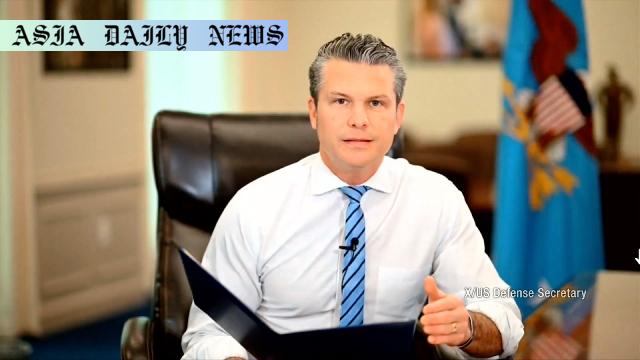Generals: Hegseth directs 20% cuts in US four-star generals for improved efficiency.

Introduction to the Reduction in US Military Generals
In a significant move aimed at restructuring the United States military hierarchy, Defense Secretary Pete Hegseth has announced a 20% reduction in the number of four-star generals. This unexpected yet strategic decision aims at ensuring the operational and strategic readiness of the military, while also contributing to a larger federal effort to optimize government spending spearheaded by the Department of Government Efficiency (DOGE). Hegseth clarified that this step is not punitive but rather a measured approach to streamlining leadership.
Breakdown of the Current Leadership Landscape
The US military currently boasts 44 high-ranking officials holding the four-star general rank or its equivalent. These officials are stationed across various commands globally, overseeing extensive military operations. Some sources within the Pentagon have hinted that part of the restructuring could involve merging key commands such as those responsible for Africa and Europe. This would create a more centralized chain of command and reduce bureaucracy.
A Closer Look at the DOGE Initiative
The call for a 20% reduction falls in line with a broader push led by the Department of Government Efficiency (DOGE). This initiative is tasked with trimming federal spendings and optimizing governmental departments across all sectors, including defense. DOGE’s recommendations heavily emphasize operational efficiency without compromising the effectiveness of critical missions, aligning closely with Hegseth’s vision.
Potential Impacts on Military Readiness and Capability
The decision to consolidate leadership posts could result in both short-term disruptions and long-term gains. In the short term, the coordination between affected commands could face temporary challenges as responsibilities are reassigned. However, proponents argue that leaner leadership structures foster quicker decision-making and enhanced accountability. With fewer individuals in the decision-making loop, communications often become streamlined, enabling a more agile response to emerging threats.
Criticism and Support from Various Quarters
While many support this move as a necessary adjustment, others have raised concerns regarding its timing, especially considering ongoing global tension. Critics argue that a reduction in leadership might hinder the military’s capacity to respond rapidly to geopolitical challenges. Conversely, supporters believe that streamlining leadership is essential for a modern military force with technological advancements and evolving warfare tactics such as cyberwarfare and drone operations.
Moving Towards a Future-Ready Military
The overarching goal behind Hegseth’s directive is to create a more flexible and efficient military institution that is better equipped to handle future challenges. By reducing high-level redundancies, the focus shifts towards operational readiness and combat effectiveness, ensuring that the military adapts to shifting global dynamics without unnecessary overheads.
Conclusion
Defense Secretary Hegseth’s directive for a 20% reduction in generals signifies a bold step towards redefining the structure of US military leadership. While challenges may arise during this transition, the potential benefits of enhanced efficiency, fewer bureaucratic layers, and improved strategic focus cannot be ignored. This decision, though controversial to some, aligns with the overarching goal of preparing the US military for the complexities of modern warfare.
Commentary
Introduction
The announcement of a 20% reduction in the US military’s four-star generals by Defense Secretary Pete Hegseth sparks a critical conversation about leadership restructuring. Many in the public sphere view this move as a necessary step towards a streamlined military system, while others express concerns regarding its timing and implications. Let us delve into why this decision, though contentious, has both strategic and operational merit.
Why Change Is Necessary
The modern military operates in a drastically different landscape compared to decades ago. Technological advancements and new forms of combat have rendered some traditional structures less effective. In this context, reducing redundant high-level personnel may not only save costs but also improve the agility of the armed forces. By concentrating authority in fewer hands, decision-making can become faster and more cohesive, especially during critical scenarios such as natural disasters or sudden international escalations.
Addressing Concerns
Critics of the reduction argue it could weaken the military’s leadership capacity, especially during times of global instability. These concerns, while valid, overlook the adaptability and resilience of the armed forces. Streamlining does not necessarily mean cutting down capabilities; rather, it is about refocusing resources on newer priorities. Furthermore, with DOGE’s involvement, this initiative seems to be part of a calculated effort grounded in practical efficiency rather than arbitrary budget cuts.
Final Thoughts
Hegseth’s decision highlights the need for modern military institutions to evolve to remain effective. While the details of implementation will reveal its true impact, the intent behind this restructuring is commendable. A more focused and agile system of governance can enable the US military to adapt swiftly to any challenges it faces in an ever-evolving global landscape. This reform may very well set a powerful precedent for other institutions navigating modernization in uncertain times.


